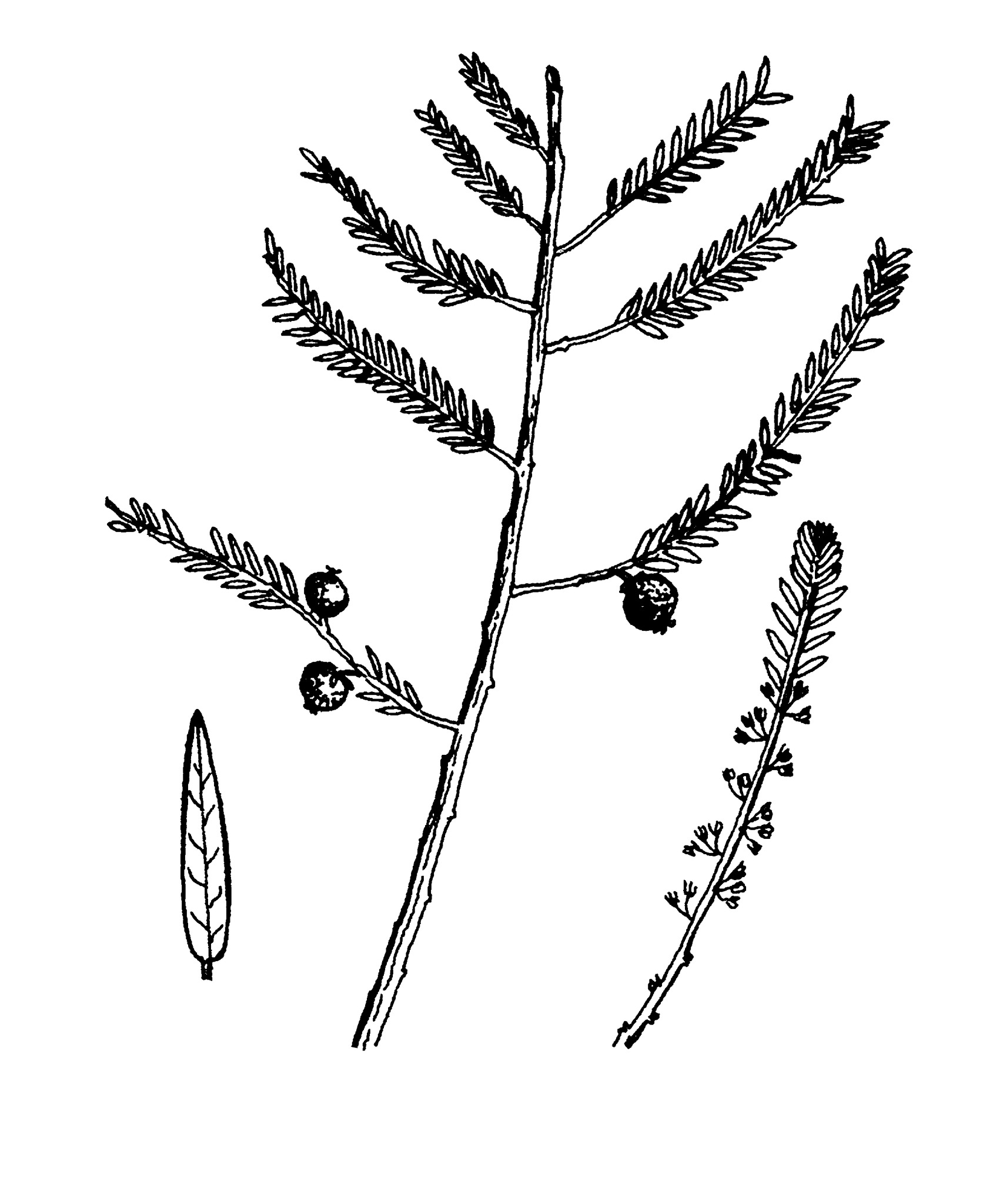
From the Greek phyllon — leaf and anthos — flower, referring to the production of flowers on cladodes in some species.
Herbs, subshrubs or shrubs, evergreen, annual or perennial, mostly male and female flowers on the same plant; stems and foliage without latex. Indumentum of simple, multicellular hairs. Stipules entire, often conspicuous and peltate, persistent. Leaves alternate, often phyllanthoid (i.e. distichous on lateral branches giving the appearance of pinnate leaves), or spirally arranged on branches, stalked, unlobed, penninerved, without glands; margins entire. Inflorescences axillary, comprising solitary or clustered flowers. Male flowers stalked; calyx lobes 4-6, overlapping, free; petals absent; disk of small discrete lobes; stamens 2-6, filaments free or united. Female flowers stalked; calyx lobes 4-6, overlapping, free; petals absent; disk cup-shaped or united into an annulus; ovary 2-3-chambered, ovules 2 per chamber; styles 3, shortly fused at base, divided into 2. Fruits capsular, dehiscent, 3-lobed, surface smooth. Seeds 3-angled, ecarunculate.
Intolerant of frost. P. tenellus Roxb. from Madagascar has naturalised in tropical and subtropical regions and is becoming a weed of glasshouses in cool districts.
About 750 species, cosmopolitan, 51 species in Australia. 4 species are commonly cultivated.
Seeds or cuttings.
Foliage with leaves distichous on branchlets or spirally arranged on branches; flowers with disk.
Webster (1967).
Source: (2002). Euphorbiaceae. In: . Horticultural Flora of South-eastern Australia. Volume 3. Flowering plants. Dicotyledons. Part 2. The identification of garden and cultivated plants. University of New South Wales Press.
